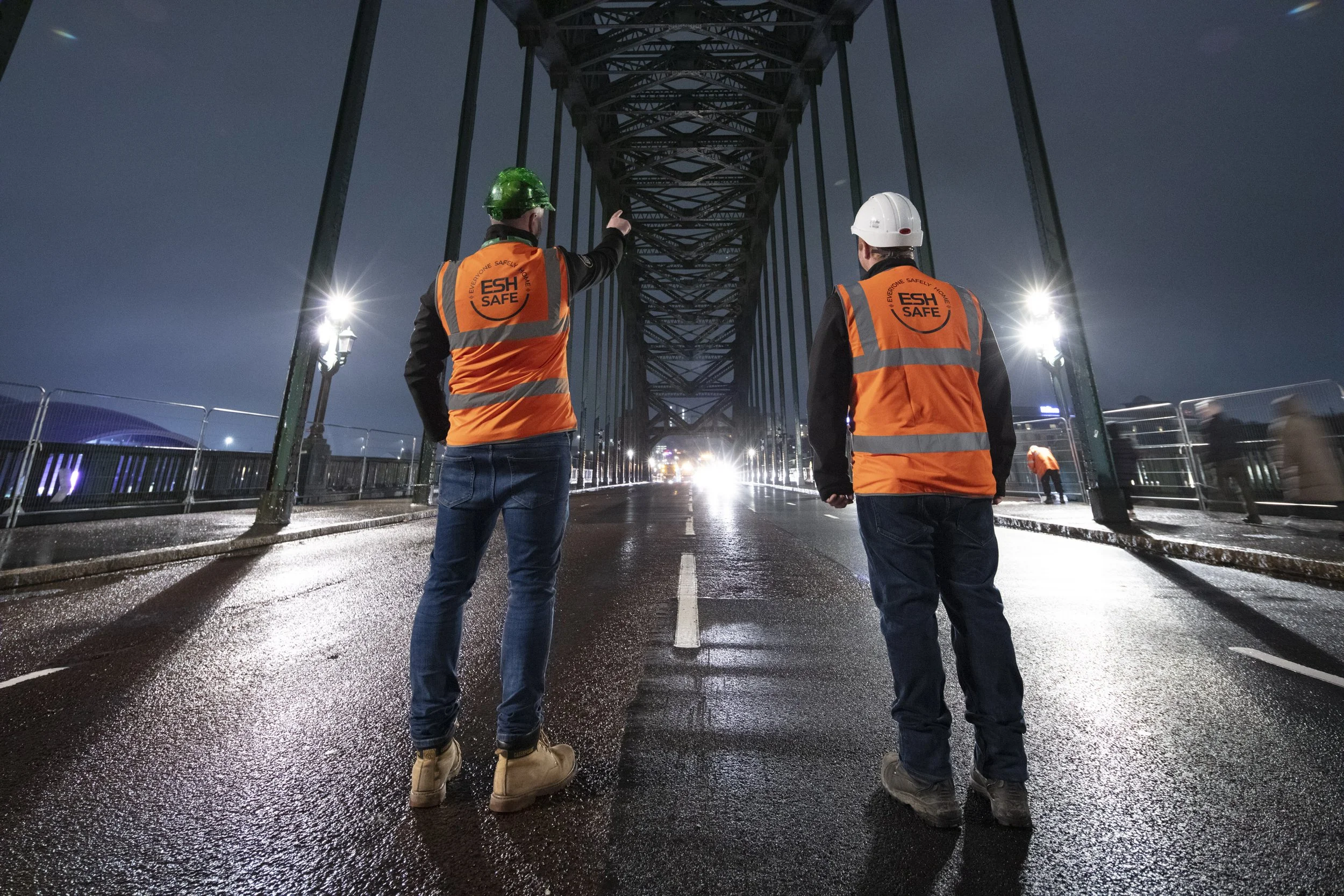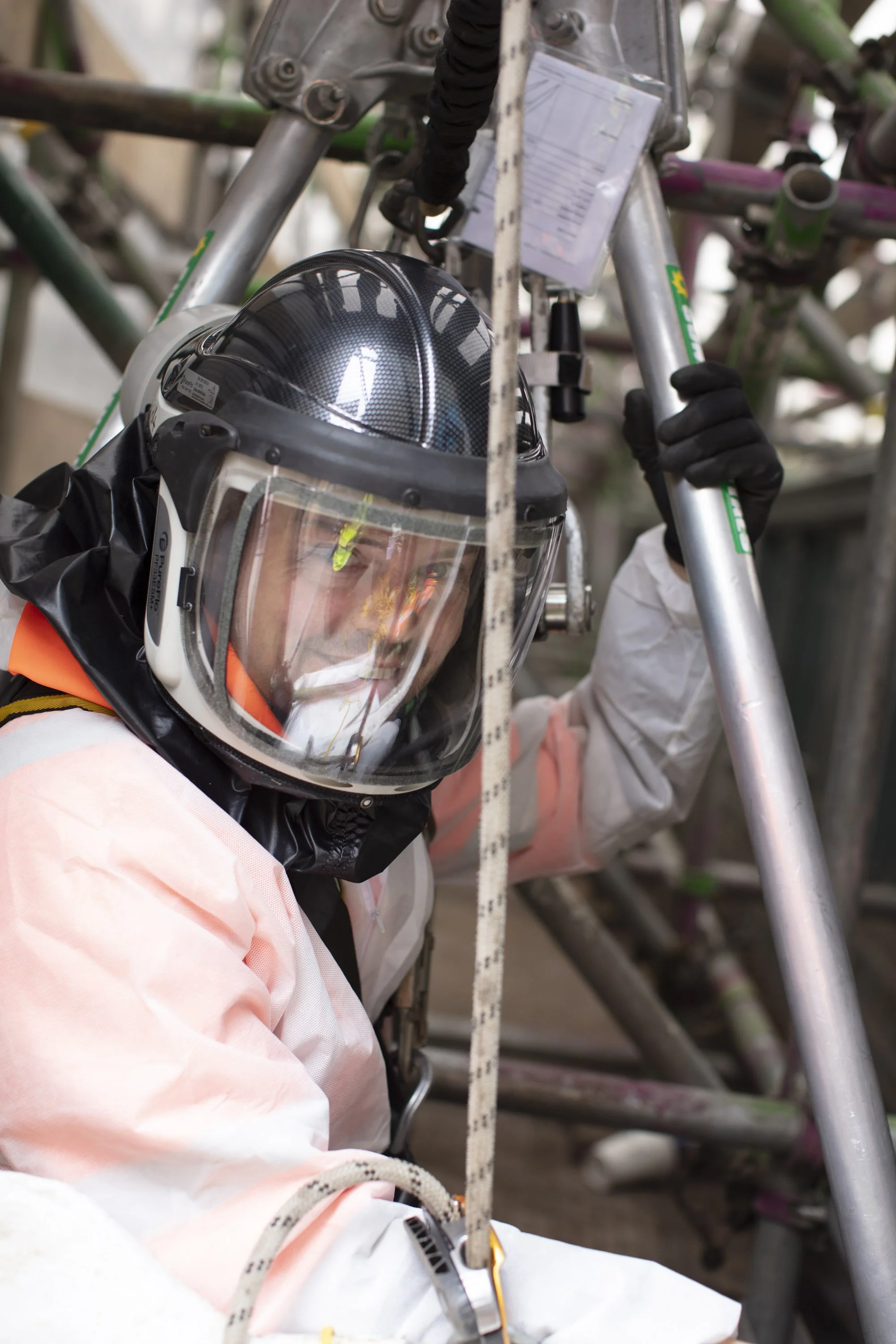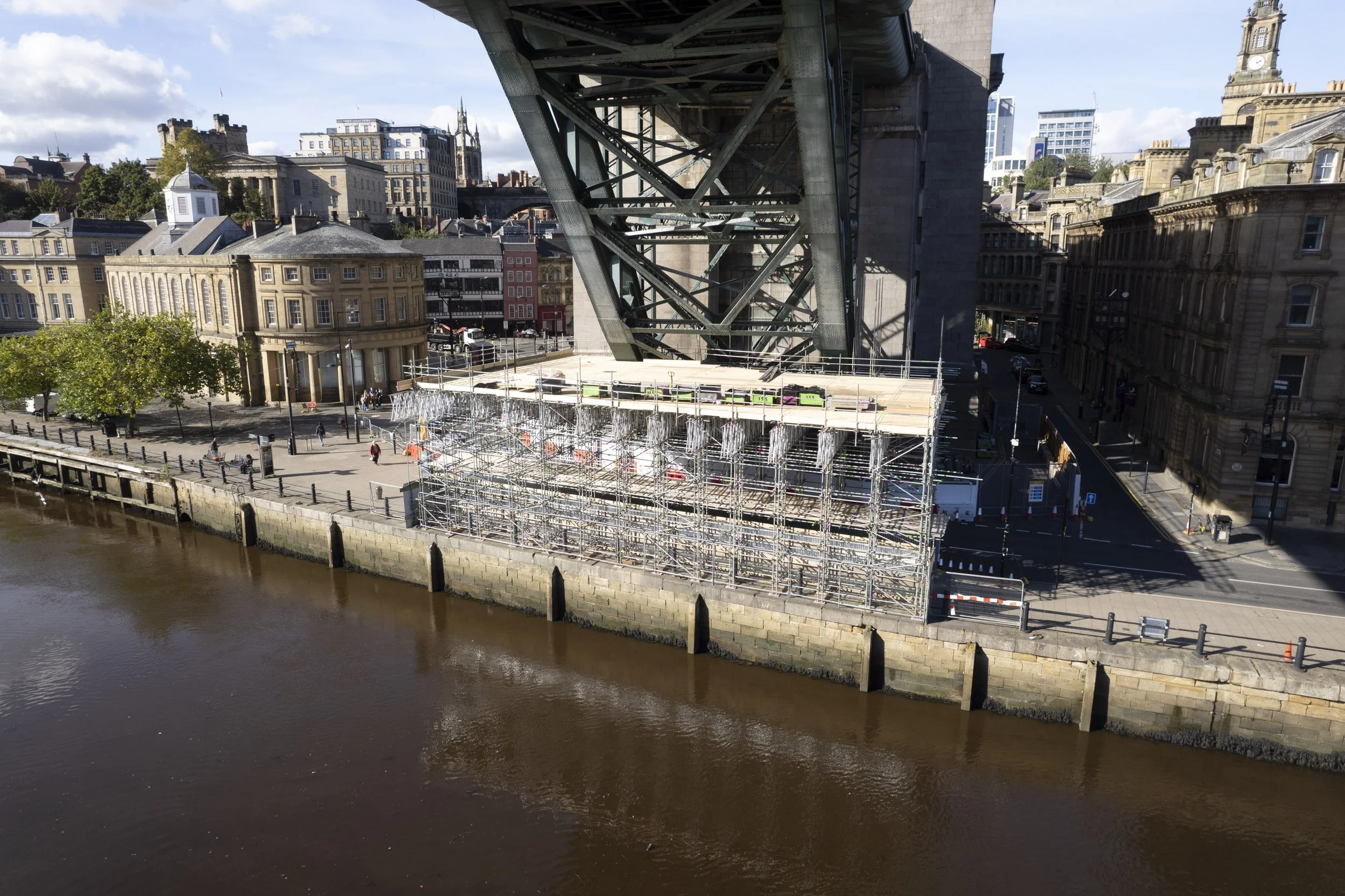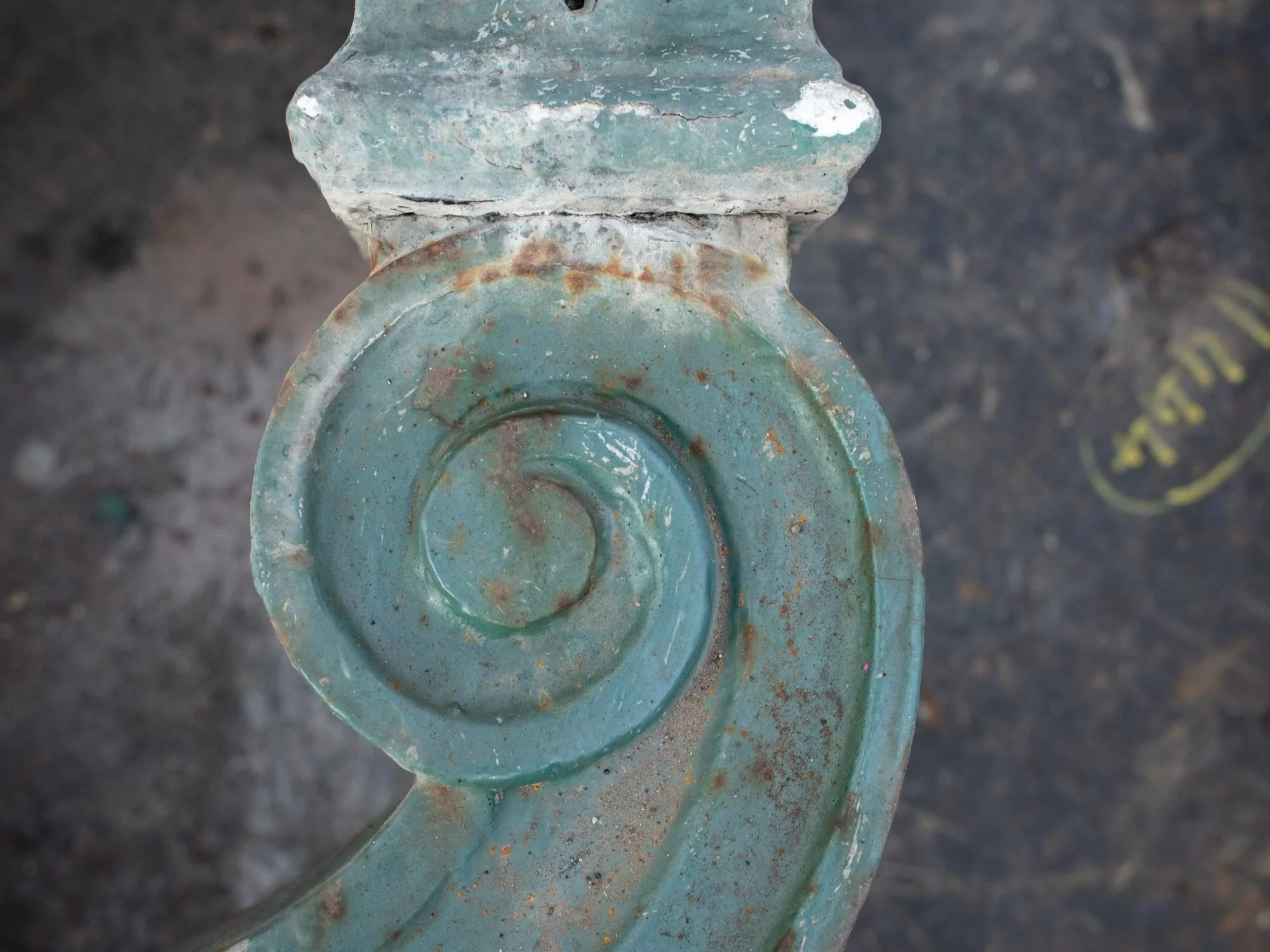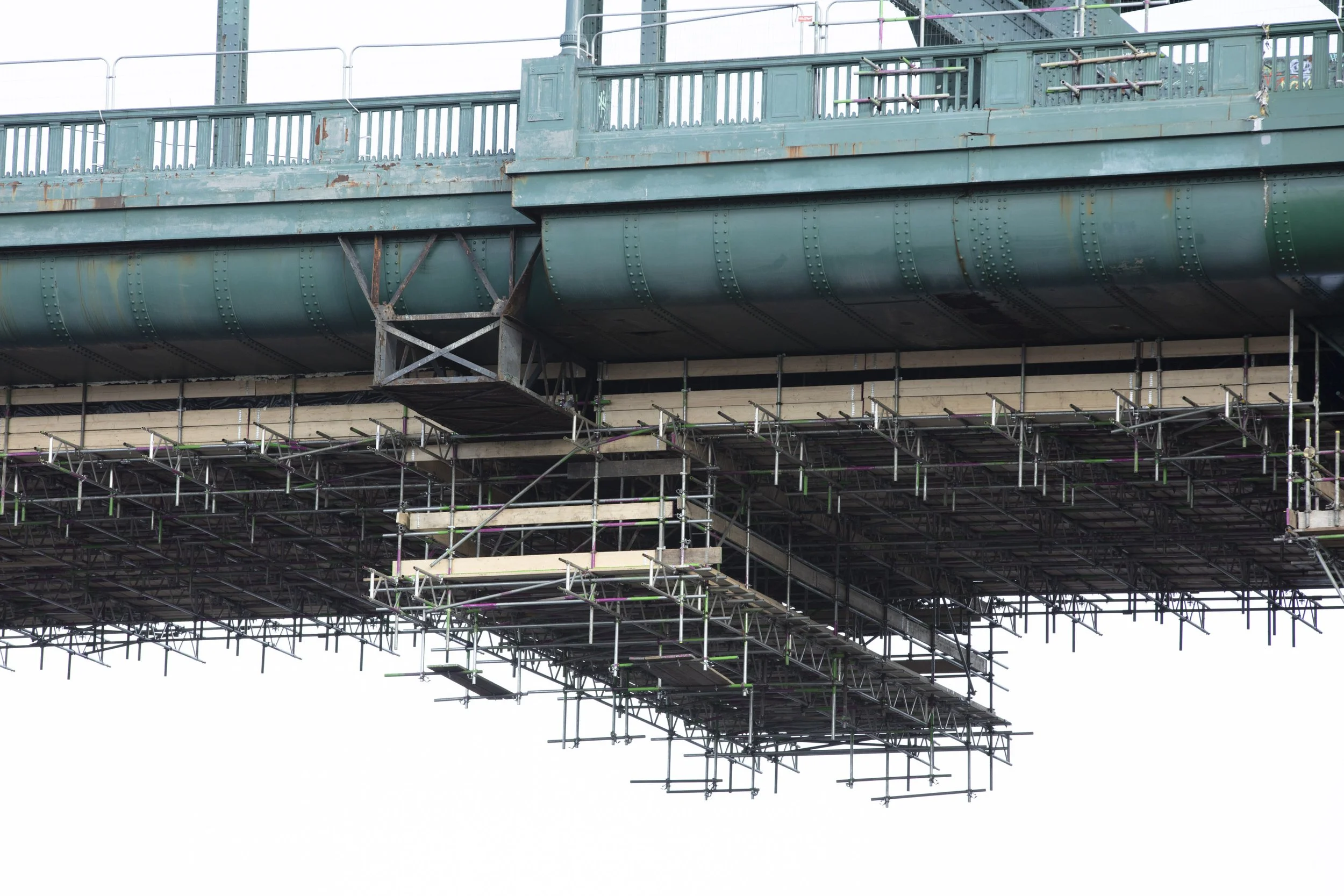
Gallery
Check out a selection of our favourite project images taken throughout the first year on this iconic restoration project.
A view from the scaffolding adjacent to beneath the bridge parapet on the Gateshead quayside – this was taken in February last year before the scaffolding was fully encapsulated for cleaning and grit blasting work to begin.
Scaffolding was installed on the Gateshead Quayside – adjacent to the tower – ahead of the kittiwakes returning in February. The scaffolding structure was made up of 13 levels.
The Institution of Civil Engineers’ (ICE) 159th President, Professor Anusha Shah, met the project team during a visit in March 2024. Professor Shah heard about the careful consideration that is being given to the kittiwake colony throughout the project.
Did you know the team are regularly working 20 hours per day on the project? This image was taken during an overnight closure to install traffic management on the bridge in April 2024.
The bridge was reduced to one lane in each direction for the safety of the workforce and members of the public ready for restoration work to begin on 2nd April 2024.
A close up of the under arch within the Gateshead scaffolding - before any restoration work had begun.
Rope Access Technician, Matt, is ‘suited and booted’ in the necessary personal protective equipment (PPE) to allow safe access within the bridge deck void to carry out guano removal and make the area safe to access.
Buckle up! One of the first jobs on the eastern footway was to remove the tarmac and steel buckle plates to gain access into the bridge deck void beneath. Approximately 80 buckle plates had to be removed and replaced on this footway alone.
Spring clean? Before grit blasting and repair work could start, the steelwork had to be cleaned to remove years of dirt, guano and rust.
A bridge hanger is pictured to the left before any restoration work took place. The hangers carry the weight of the road traffic, and some of which have required structural repairs and interventions.
A temporary scaffold floor had to be installed within the bridge deck void to make it safe for operatives to work. It’s a tight squeeze, with the void just 1.5 metres high in places.
An up close shot of the bridge’s screen plates which were hidden behind the encapsulated scaffolding on the Gateshead Quayside. This section was the first to be fully restored and repainted in Hollybush green.
The bridge’s handrail, also known as the parapet. General Foreman, Kev, is pictured here carrying out some up close checks to see the outcome of the grit blasting.
Remarkably like new! Some sections of the bridge’s steel were in good condition after being cleaned, grit blasted and primed. Grit blasting removes all previous paint before re-painting can begin.
A piece of history. Various inscriptions of Middlesbrough-based Dorman, Long and Co. - who famously constructed the bridge – were uncovered through the grit blasting efforts.
Welding and fabrication apprentice, Charlie, represents the third generation of the Nicholson family to work on the bridge.
The bridge’s railings on the west footway are pictured here – this was the first completed section to be uncovered for passersby. The scaffolding on the Gateshead quayside was then dismantled level-by-level.
Journalist and Presenter, Julia Barthram, was on hand to cover the paint reveal on ITV Tyne Tees – climbing eight levels of scaffolding to capture the major milestone in the long-awaited project.
It was a momentous occasion in October last year when the first restored and re-painted section of the bridge was revealed. Newcastle City Council’s Assistant Director for Transport, Pamela Holmes, is pictured here taking in the moment.
Norman, Painter and Blaster, is pictured here in full personal protective equipment which is essential when entering the encapsulated scaffolding to carry out blasting works and mechanical spray painting.
Primed and ready for a ‘stripe coat’. Operatives apply an additional coat of paint to intricate sections of the bridge to protect the longevity of the newly applied paint system.
While 95% of the paint system is applied with a spray machine, 5% is applied by hand. This is called a stripe coat to make sure all edges and uneven surfaces have the correct coverage of paint applied.
And so it begins on the Newcastle quayside. Here you can see the first section of scaffolding built up to ‘protection deck level’. Another eight levels of scaffolding are then built on top of this.
In October last year, newly fabricated steel buckle plates were being installed along the east footway. Jim and Charlie are pictured here guiding one into position.
Smiles from painters, Craig, Craig, Daryll and Daniel (l-r), as they take a moment to be pictured by the project photographer outside of the encapsulated scaffolding.
Thumbs up from the safety crew who operated a safety boat for four weeks while the scaffolders were installing the underdeck scaffold structure 84ft above the River Tyne. This phase of scaffolding spans 100 metres across the structure.
A close up a lantern arm which features on the bridge's street lighting columns. Most of these will be restored throughout the project.
The first bit of sunlight hitting the bridge’s restored screen plates, showing off the new British Standard 4800 colour referenced 14C39. Known as ‘Hollybush’ green, it is as close to the original colour as possible.
Here you can see the new high strength bolts which have been installed to replace some corroded rivets.
The suspended scaffold structure was installed adjacent to the soffit and is 11 metres wide. It provides access underneath the main bridge deck for further inspections to be carried out ahead of restoration work beginning in this section.
Mark, Fabricator and Welder on the project, is bolting down the buckle plates. Each plate requires 40 new bolts to secure it.
Micky and Alan are pictured 84ft above the Tyne here where they are installing the up and over scaffolding sections.
The Newcastle quayside scaffolding installation is complete and fully encapsulated, paving the way for grit blasting to commence. A pedestrian and vehicle tunnel had to be incorporated into this phase’s design to reduce disruption on the quayside.
A glimpse into this iconic project’s future and the engineering detail that went into the bridge when it was originally constructed.
A section of the bridge’s under arch stands proudly restored in front of The Glasshouse Gateshead.
Old versus new! The scaffolding on the Gateshead quayside is being dismantled to reveal the first fully restored section of the bridge.
Image Credit: Andrew Heptinstall Photography




